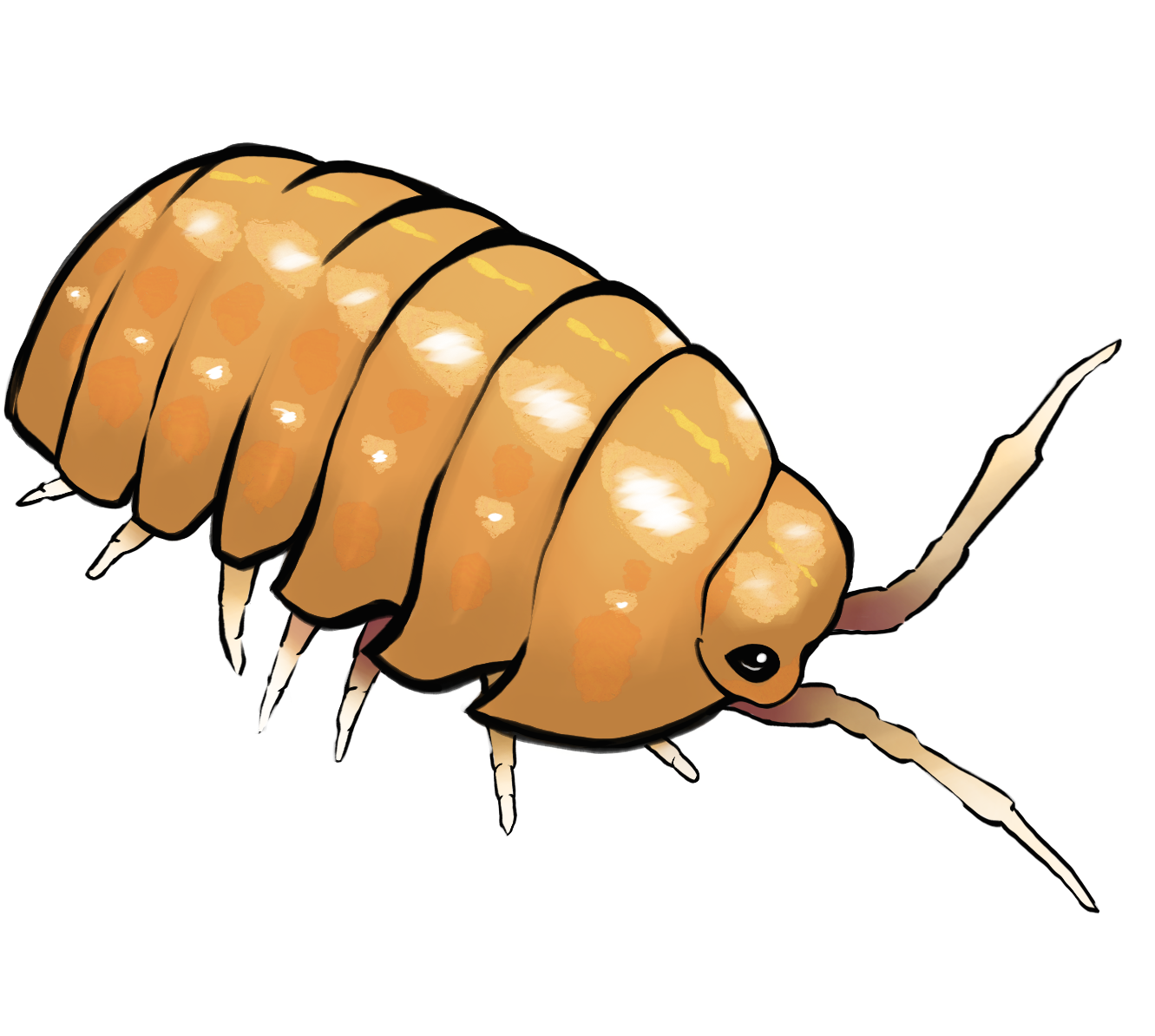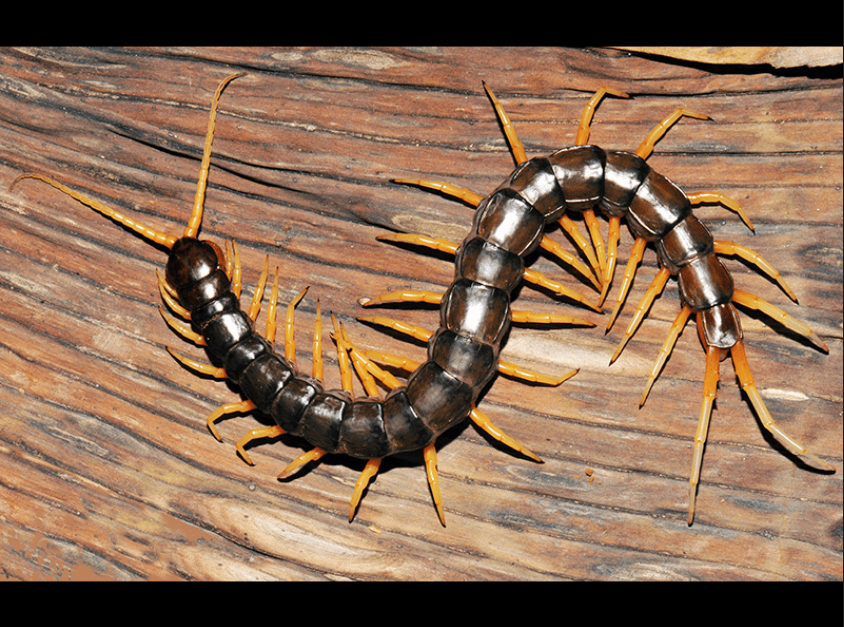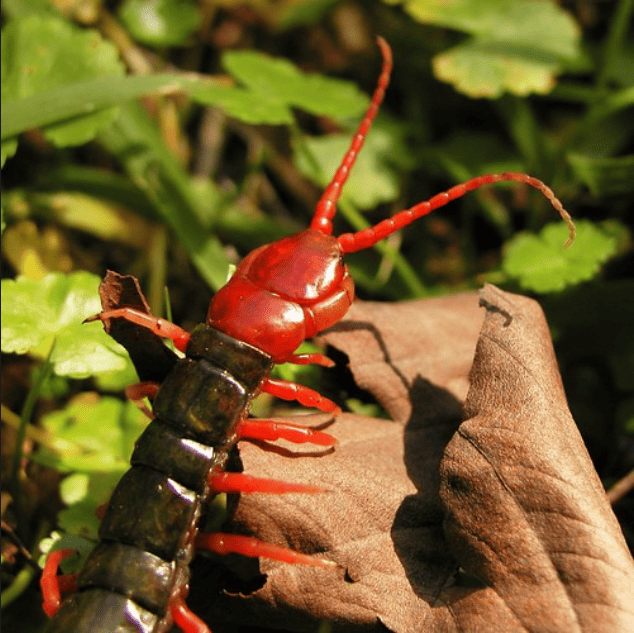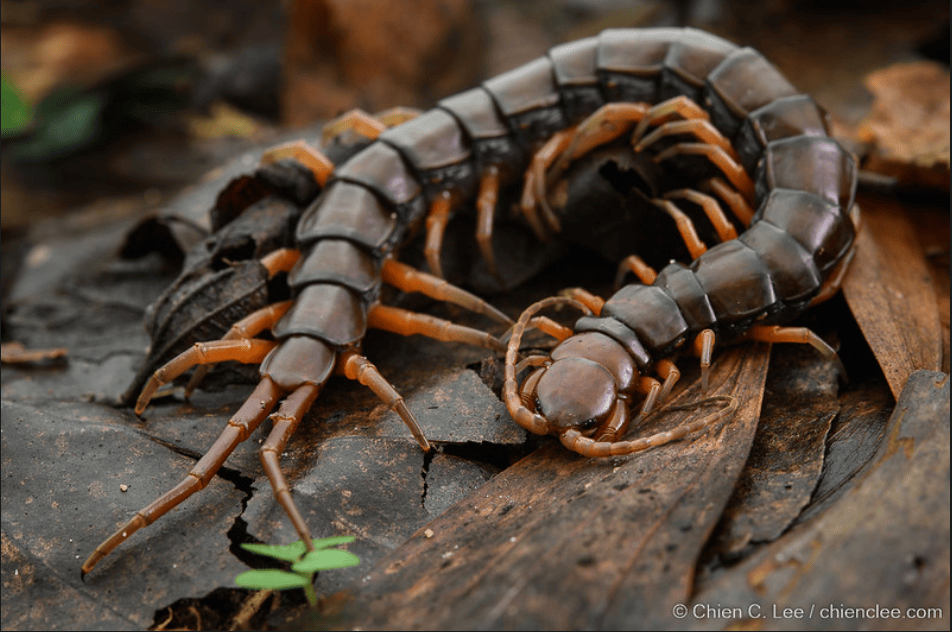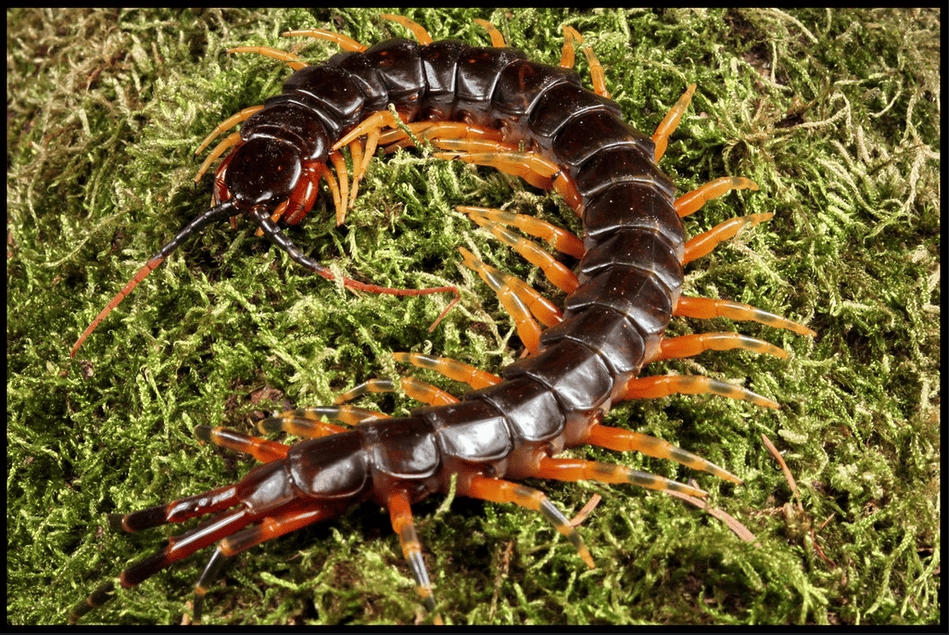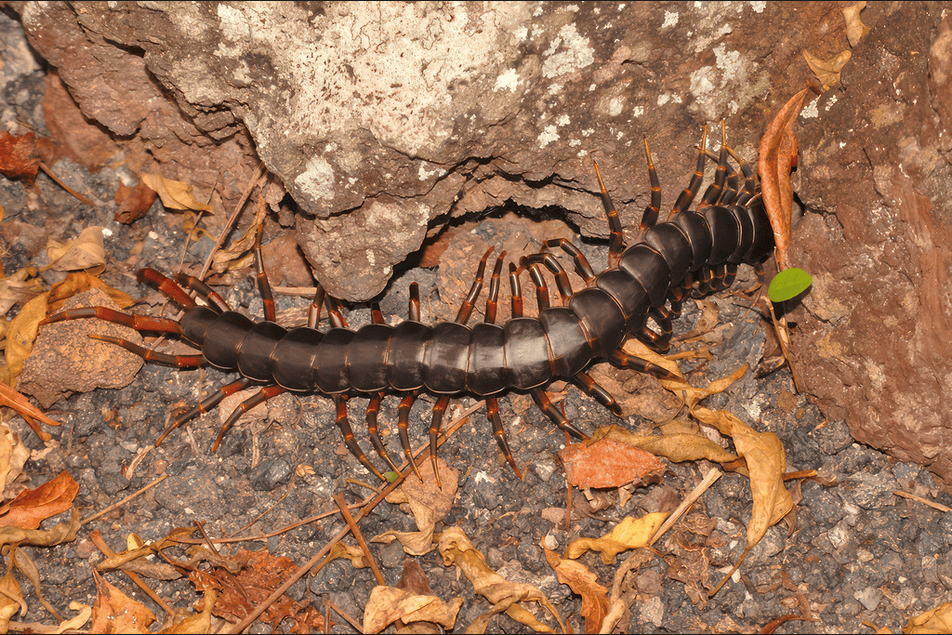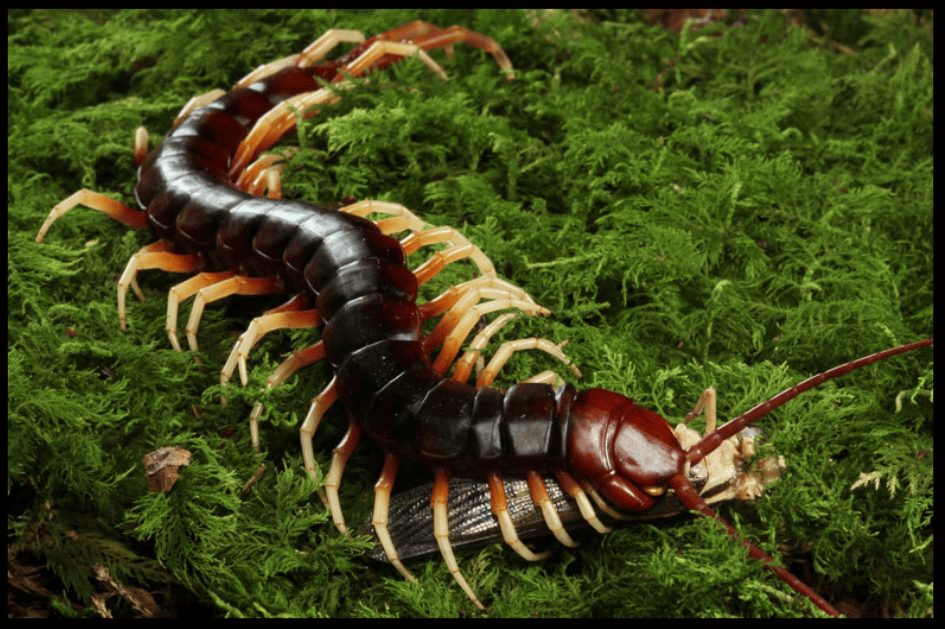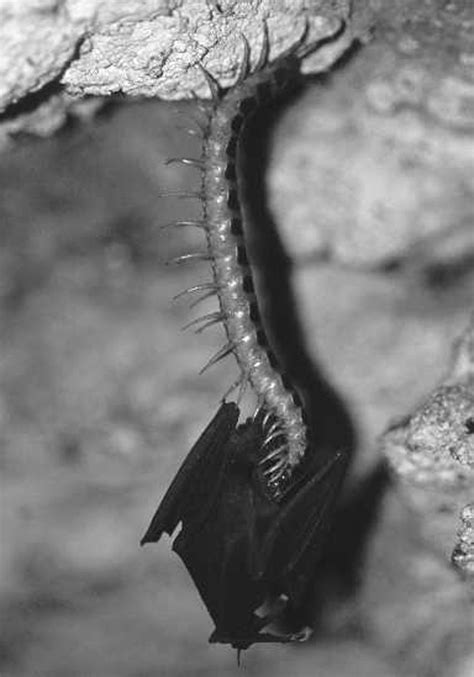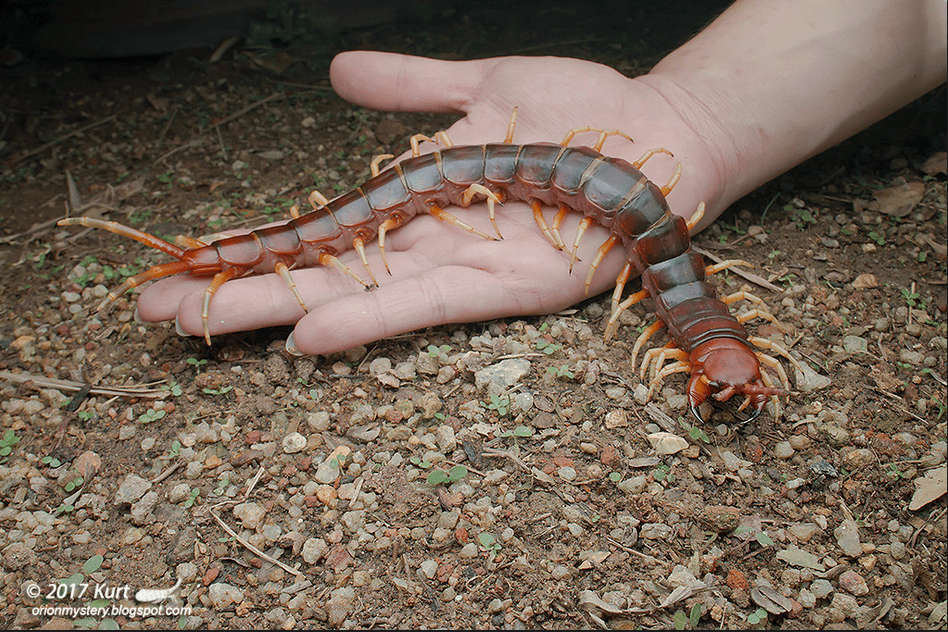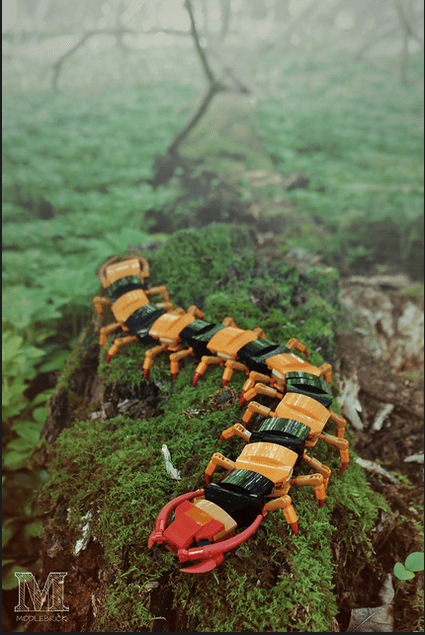cross-posted from: https://lemmy.ml/post/12863454
Main Photo ‘Scolopendra-hardwickei2’ by Steven Lenaerts…a caring mother!
Part 1 here
Next up, size wise is Scolopendra cataracta…
Scolopendra cataracta is a species of centipede in the family Scolopendridae. It is the first known amphibious centipede, growing to up to 20 centimetres (7.9 in) in length
Photo by NELSON SANCHO
When exposed, it escapes into water. It both runs along stream beds and swims with eel-like horizontal undulations of its body. Out of water, water rolls off the centipede’s body leaving it dry as the surface is hydrophobic. The species was discovered, and the first specimen collected, in 2000 near Thailand’s Khao Sok National Park. Two more specimens were collected near waterfalls in Laos
Next is Scolopendra heros
…commonly known as the Arizona desert centipede, giant desert centipede, giant Sonoran centipede, Texas black-tailed centipede, Texas redheaded centipede, and giant redheaded centipede, is a species of North American centipede found in the Southwestern United States and Northern Mexico.
[It] is the largest centipede in North America. It has an average length of 6.5 inches (170 mm), but can reach up to 8 in (200 mm) in the wild, and even longer in captivity…It is aposematically colored, to warn off potential predators
Photo by Lat3ralus
For humans, a bite from S. heros usually causes sharp, searing, local pain and swelling, but has never caused any confirmed deaths
Scolopendra mutilans aka The Chinese red-headed centipede (and the Chinese red head averages around 20 cm
Photo by pompogna
S. mutilans is known for harbouring little aggression to other centipedes, a trait very rare amongst giant centipedes, and allows it to be kept communally. Antimicrobial activities of the identified compounds were reported against Gram-positive and Gram-negative bacteria, fungi, viruses, and parasites, that possibly explain centipede’s survival in harsh and polluted environments.
Females are incubator mothers, guarding the eggs by wrapping their bodies around their clutches until the eggs hatch.
Scolopendra subspinipes is an active, and aggressive predator, growing up to 20 cm and found throughout southeastern Asia.
…in 2018 a far larger specimen was recovered in Hawaii by Clayton Cambra, who captured what appeared to be a Scolopendra subspinipes that measured an astonishing 36.6 cm in length
Photo by Chien Lee
[It is] one of the most widespread and common species in the genus Scolopendra, it is also found on virtually all land areas around and within the Indian Ocean, all of tropical and subtropical Asia from Russia to the islands of Malaysia and Indonesia, Australia, South and Central America, the Caribbean islands, and possibly parts of the southern United States, but how much of this range is natural and how much due to human introduction is unclear. With a wide geographic range and numerous color variations, the species is known by many common names, including jungle centipede, orange-legged centipede, Hawaiian centipede, and Vietnamese centipede
…[an] aggressive and nervous arthropod, ready to strike if interfered with and sensitive to vibrations nearby. It preys primarily on arachnids, including spiders, scorpions, and vinegaroons. It is large enough to overpower small vertebrates, such as mice or small reptiles, and will readily attempt to consume them. It tends to try to eat almost every living animal it encounters that is not longer than itself. It seizes prey with its anterior legs and then uses its toxicognaths to inject venom. The prey is held by the centipede’s other legs until it is subdued. When defending itself or attacking prey, the centipede uses its entire body, coiling around the animal and holding on with its legs, from which position it can use its toxicognaths to deliver venom
The male produces capsules containing mature sperm cells, spermatophores, which are deposited in a reservoir called the spermatheca of the female during mating. The female then fertilizes her immature eggs…and deposits them in a dark, protected area. The female lays 50 to 80 eggs, which she vigilantly protects until they hatch and the baby centipedes molt once. If danger is detected, she wraps around her young to keep them safe
S. subspinipes venom normally causes extreme pain, among other symptoms. A fatal case was reported in the Philippines in which the centipede bit a 7-year-old girl on her head. She died 29 hours later
Next is Scolopendra galapagoensis, aka the Galápagos centipede, and Darwin’s goliath centipede which can grow up to 30 cm
Photo by Martin
It is the only representative of the genus Scolopendra on the Galapagos Islands, among twelve other species of centipede present on the Islands. It is also found on mainland South America in Ecuador and Peru, and on Cocos Island in Costa Rica
It comes in 3 colour morphs Dark green to black and Orange-red (above and below)
Photo by Tom Schultz
S. galapagoensis has been reported preying on crickets, newborn rodents, the Galapagos Rice Rat, and, in one paper, a Floreana Racer snake. It is hunted by a variety of birds of prey including the Galapagos hawk, two species of mockingbird, and the common Black Rat
And finally, the biggest of them all the Scolopendra gigantea!
Photo by Martin
…also known as the Peruvian giant yellow-leg centipede or Amazonian giant centipede, is a centipede in the genus Scolopendra. It is the largest centipede species in the world, with a length exceeding 30 centimetres (12 in)
It is a carnivore that feeds on any other animal it can overpower and kill. It is capable of overpowering not only other invertebrates such as large insects, worms, snails, spiders, millipedes, scorpions, and even tarantulas, but also small vertebrates including small lizards, frogs (up to 95 millimetres (3+3⁄4 in) long), snakes (up to 25 centimetres (10 in) long), sparrow-sized birds, mice, and bats
Large individuals of S. gigantea have been known to employ unique strategies to catch bats with muscular strength. They climb cave ceilings and hold or manipulate their heavier prey with only a few legs attached to the ceiling.
Photo will be from BBC, but I haven’t found a link, as yet
Natural predators to the giant centipedes include large birds, spiders, and arthropod-hunting mammals, including coati, kinkajou, and opossum.
At least one human death has been attributed to the venom of S. gigantea. In 2014, a four-year-old child in Venezuela died after being bitten by a giant centipede which was hidden inside an open soda can. Researchers at Universidad de Oriente later confirmed the specimen to be S. gigante
DON’T TOUCH IT!!!
Photo by Kurt (Orionmystery) G
Well, I hope you enjoyed the posts!
Here’s a fun palette cleanser if you’ve scrolled this far…Scolopendra hardwickei as lego (or something like that)
Photo by Middle Brick
Sources here and wikipedia, here here here here here and here

